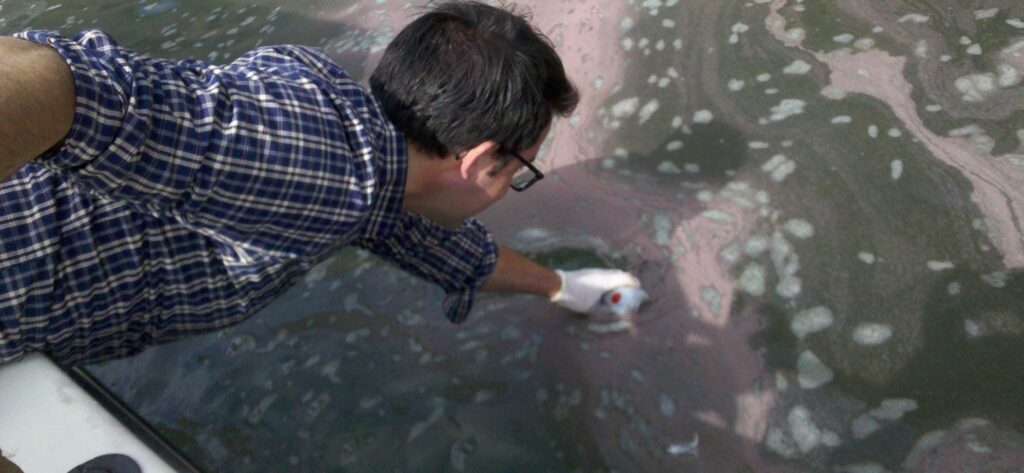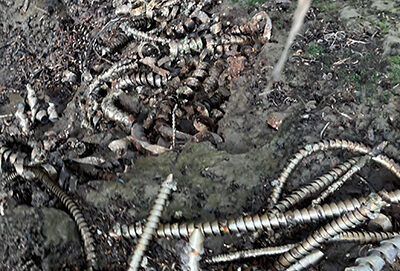A Toxic Deluge
Every rainy season, industrial facilities allow toxic pollution to run off their sites around San Francisco Bay. More than 1,600 facilities—like scrap metal yards, boat and shipyards, trucking terminals, landfills, semiconductor manufacturers—regularly discharge toxic runoff into the Bay and into the rivers, creeks, sloughs and storm drains that flow through our communities.
These pollutants harm wildlife and people who spend time in and around the Bay. And the toxic materials can get into nearby communities where people live and play. Even during a drought this pollution is a threat—when rain is less frequent, pollution becomes more concentrated.

Fighting Back
There are laws that should prevent this kind of pollution. But sometimes companies ignore the law and prioritize profits over public health. Sometimes they claim ignorance of the law. And sometimes it’s just an honest mistake. Regardless of the company’s reason for polluting, you and your loved ones deserve to be safe from their toxic pollution.
That’s why Baykeeper’s field team gets busy during the rainy season. Our investigators review data and sample runoff from industrial sites all around the Bay to identify the most problematic polluters. And then we use our drones and boat to catch industrial polluters in the act.
Our attorneys use the evidence to file Clean Water Act lawsuits against the polluters to force them to stop harming the Bay and our neighborhoods.
From Polluter to Bay Steward
Once Baykeeper files a lawsuit, we don’t stop there. Our expert legal and science teams meet with facility staff to discuss their operations and recommend potential pollution controls that will effectively and efficiently reduce pollution. And we work with them to agree on actions and deadlines to stop polluting the environment.
And we keep going even after the legal agreements are in place. Depending on the site, Baykeeper monitors a facility’s progress for anywhere from 3-5 years to make sure their pollution controls are working. The majority of companies we’ve worked with have stopped polluting the Bay and local communities. Several other sites are making progress toward protecting the Bay from toxic contamination and have reduced their pollution levels by 50 to 90%.
Pictured: We’ve gotten over 50 industrial facilities to take measures to stop polluting the Bay and its tributaries. Industrial facilities that have completed their pollution cleanup requirements are marked in green; ongoing cleanups are in purple.
The majority of companies we’ve worked with have stopped polluting the Bay and local communities. Several other sites have reduced their pollution levels by 50 to 90%.
While no company is ever happy when we call them out for polluting, in the vast majority of our cases, companies have ultimately shared their appreciation for Baykeeper’s attention. We’re helping them follow the law and be better Bay stewards.
When we win a Clean Water Act lawsuit, the polluter typically pays a hefty penalty for their past pollution. This money never goes to Baykeeper. We direct these payments to foundations and other non-profits to support communities around the Bay.
Over the last three decades, we’ve directed more than $12,000,000 to local projects to restore sensitive Bay habitat, organize community activists, train young environmentalists.
REport POllution
Have a tip for our team? Submit a confidential pollution report to our field team.
Submit a tip
Take ACtion
Tell the Department of Toxic Substances Control to Clean up the Bay’s Toxic Sites
There are thousands of toxic sites across California—and many of them pose a direct threat to public health and the environment. More than a thousand of those toxic hotspots are right here along the Bay shoreline. Pollution from these sites contaminates the soil and water in many frontline communities, which face the additional risk of flooding from rising sea levels.
If we don’t act soon, flooding from surface water and groundwater will spread hazardous chemicals throughout the Bay and Bay Area neighborhoods.
But for decades the agency tasked with protecting Californians and the environment from toxic pollution has failed to take sufficient action. The California Department of Toxic Substances Control (DTSC) has repeatedly fallen short of cleaning up hazardous waste sites to adequate standards, including sites under consideration for housing. And the agency has so far ignored calls to identify and prioritize sites most vulnerable to rising waters.
You can help. Please sign our letter to urge DTSC Director Meredith Williams to improve the agency’s priorities.
We’re asking DTSC to more thoroughly clean up toxic sites and make sure the cleanups themselves are safe for neighboring communities. DTSC should also prioritize accounting for both sea level and groundwater rise in its shoreline cleanup plans.




